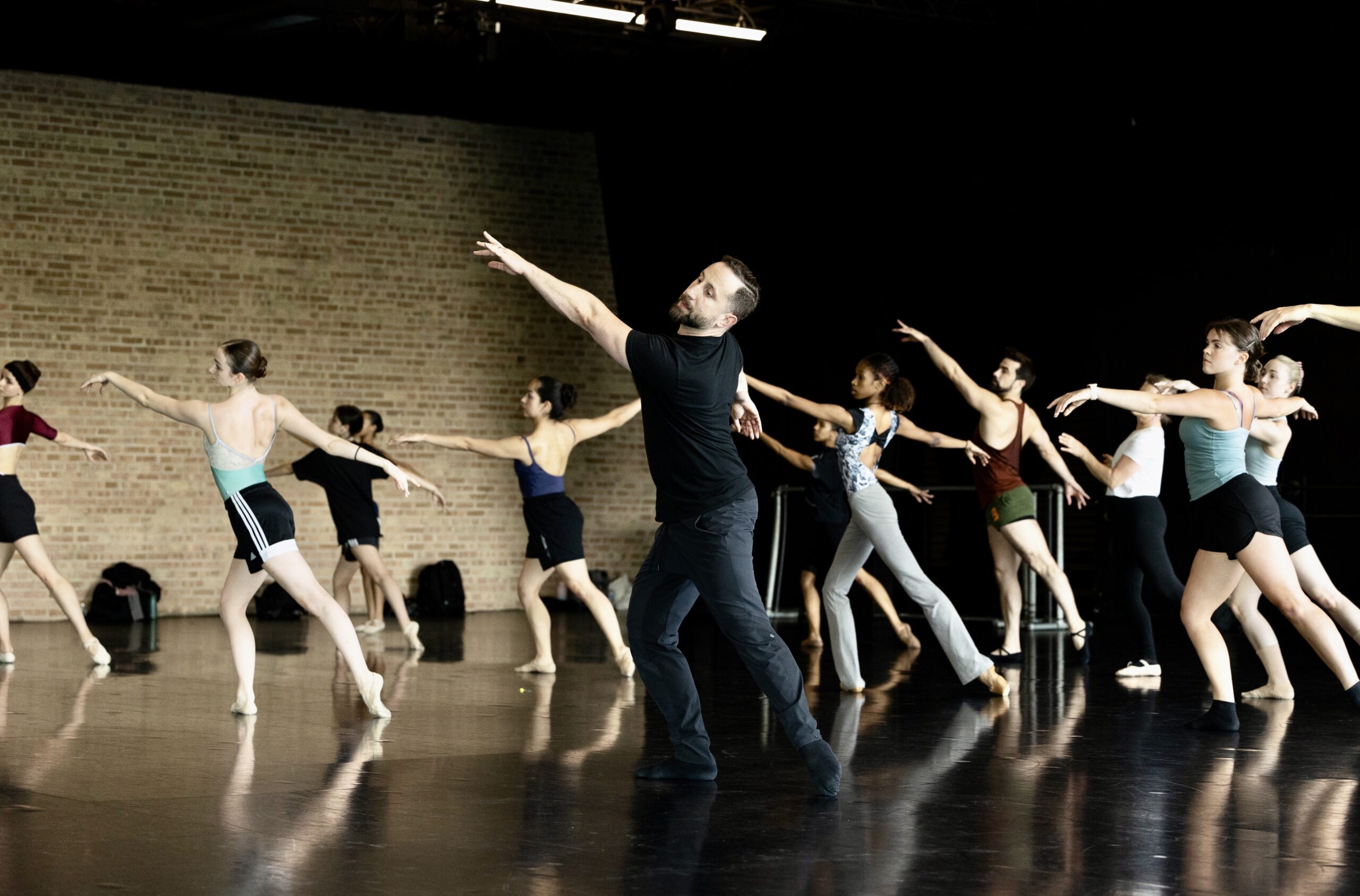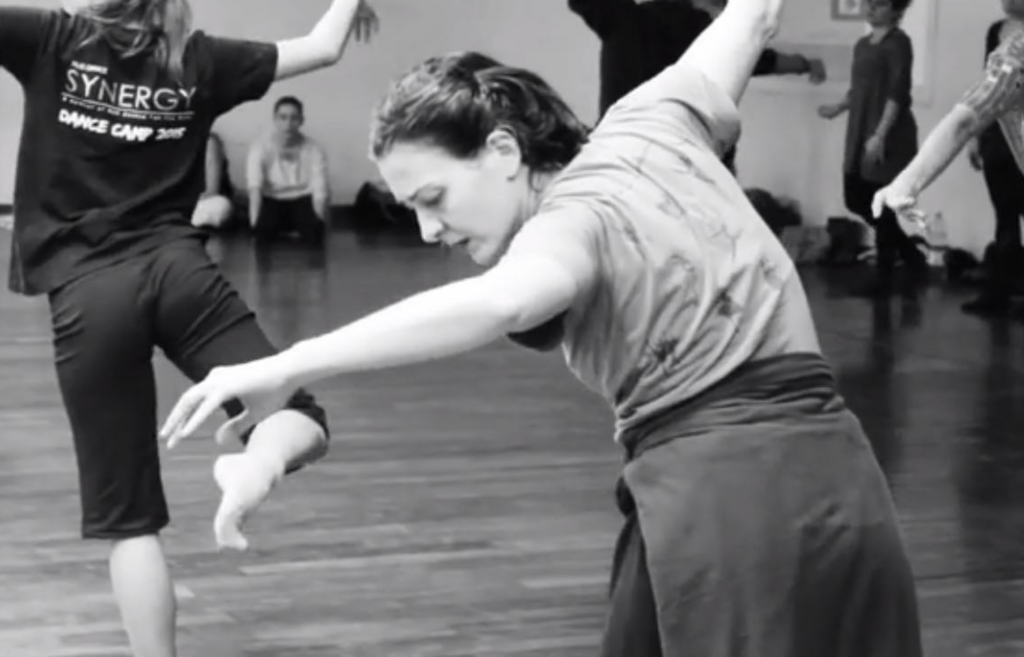
Teaching an open class can feel like a paradoxical puzzle: Though your class might be labeled as “Intermediate Contemporary,” you may have beginner as well as professional dancers in the room. You might see the same students every week, but it’s equally possible your class will be populated with new faces each time. You might be teaching at a studio owned by someone else, where it isn’t your responsibility to organize enrollment—but if you’re paid per head, the number of people in attendance can have a direct result on your paycheck.
The come-and-go mentality that can dominate open class often means dealing with the unexpected, says Emily Bufferd, who teaches contemporary and jazz at Steps on Broadway and lyrical, contemporary, jazz, and jumps and turns at Broadway Dance Center. “What do you do when a dancer sprains their ankle in class?” she asks. “What if someone whips out their phone and starts filming without asking? What if you’re teaching an advanced-level class and someone isn’t advanced enough? How are you going to handle that appropriately?” But with the right preparation and willingness to think on your feet, an open class can be successful for both you and your students.

Plan Ahead
Thinking through ahead of time how a beginner or more advanced dancer might modify your combinations gives you the opportunity to come up with creative solutions in advance and not have to improvise changes on the spot. “I always give two or three different options,” says Elisabetta Minutoli, who teaches advanced contemporary at Peridance Center and Steps on Broadway. “It’s like in ballet: If you have pirouettes [in a combination], you can do just a balance first, and then maybe one pirouette. I try to do the same in contemporary dance and floor work.” Bufferd employs a similar pedagogical approach. “The truly beginner dancer can do a shape instead of a jump or turn,” she says. “In a combo I taught this past week, which had a renversé sauté, I said: ‘You can take it low, without jumping; you can take it higher and without jumping; or you can do it with a low jump or a big jump.’”
Nick Pupillo, who founded the Chicago-based Visceral Dance Center in 2007, takes a different preparatory tack, organizing his ballet, contemporary jazz, and contemporary classes around a concept and then crafting each exercise to meet that idea. “I’ll have an intention set, like how we’re focusing on rotation, or how we’re supporting our backs, and I will maintain that throughout class,” he says.

Be Prepared to Read the Room
Don’t be afraid to make changes to your class plan on the fly, especially if hewing to your original combinations means the majority of your students won’t be able to keep up. “In the warm-up, if I notice there’s someone struggling with a harder version of something, I’ll jump to a more straightforward version and know that my advanced dancers will still get something out of it,” says Bufferd.
Come at It From a Different Angle
Technical vocabulary might not work for everyone, especially if you have true beginners in your class. “I really like my combinations to start from an experience,” says Minutoli. “For example, if I do a chassé en tournant with the arms crossed, instead of saying ‘Keep your elbows up,’ I might say ‘Hug someone.’ That would be the right shape.”
Teach to One Population
Bufferd is never afraid to dramatically decrease or increase the difficulty level in her class plan—she knows that a seasoned dancer will still find the experience rewarding. “An advanced dancer can get anything out of anything,” says Bufferd. On the other hand, in a mixed-level class Pupillo prefers to focus his class material to the most advanced dancers present and then offer one-on-one adjustments to anyone who appears uncomfortable coming up with their own modifications. “I teach to the highest level in the room,” he says, “but if I see someone struggling, I will go over and say, ‘You’re welcome to modify anything.’ ”
Keep Your Regulars in Mind
Cultivating a loyal set of dancers who regularly take your class is hard work, and those students shouldn’t be taken for granted. “With my regular dancers, I’m thinking about what I’m seeing in their personal practices and how this should be included in what we’re working on this week,” says Bufferd. “How can our combo address this?” That way, your class will have a pedagogical through line and also make your regulars feel seen and appreciated. Bufferd also likes to vary her warm-up and combinations every week, so that her repeat dancers are continually challenged and not in danger of going on autopilot. “If you do the exact same thing every class, your students get stagnant,” she says. “There isn’t an active thought process happening.”
You might be surprised by which dancers end up being your regulars, too. “People who danced their whole life and maybe had a baby and recently come back to class—those are my steady die-hards,” says Pupillo. “They want to take that one-night-a-week class, and they show up consistently.” He credits that to the inclusive vibe he’s worked hard to create at Visceral. “It’s important to me that a wide range of dancers feel welcomed and accepted,” he says.

Don’t Rely Solely on the Studio to Promote Your Classes
For studios that pay instructors a per-head fee for each dancer who takes class, it’s important that you exercise agency in getting students through the door. “Steps and BDC do very much promote us, which I’m very grateful for. But I also promote myself,” says Bufferd, who recently invited some regular dancers of hers to an off-hours private class, so she could update her teaching materials for sending out and have current teaching video content to share on her social media channels. “BDC was like, ‘Here’s the space, go, do your thing.’ They opened early for me. Now, when I post footage, I can be a little more selective about how my classroom is being presented.”
As the owner of Visceral Dance Center, Pupillo occupies a unique position—he’s both a business owner and an instructor. “I do a lot of our social media, promoting new teachers or classes that need a little bit of a boost,” he says, though he rarely pushes his own classes on social media. “I’ve been here long enough—people know what I have to offer.”
Be Consistent
“When I started teaching at Steps—and I’m not embarrassed of this at all—I taught two or three people for a long time as I built my class,” says Bufferd. “You really have to spend the time and be diligent and dedicated to it. You can’t be flaky with a class slot. Be consistent, put the effort forth, show up. That’ll pay off in the long run.”
Do Your Homework
For years, Bufferd both assisted and subbed for other teachers before she was offered her own class slot. Though her journey to having an open class of her own wasn’t short, it’s a trajectory that she recommends to anyone looking to become an open class teacher. “I assisted Sheila Barker for a long time, and we discussed how teaching open class is not something anybody can just walk in and do,” she says. “I had to get my hands dirty and learn how to run an open classroom. That was the best way—to have stood on someone else’s shoulders and see how they do it.”





